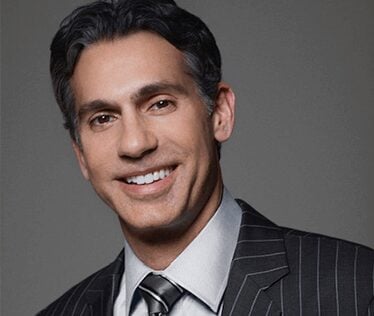What is Botox? Will it make me look fake? When should I start? What happens if I don’t keep it up? Those are common questions from people unfamiliar with cosmetic procedures. So let’s answer those questions and find out more!
Botox is the original brand of neuromodulators, developed in the 1980’s, to treat overactive muscles for medical reasons (spasms around the eyes and neck). Researches noticed improvements in skin wrinkles as well leading to a revolution in anti-aging treatment! The neuromodulator market has expanded since then to include other brands such as Dysport, Jeuveau, and Xeomin, all of which have similar actions, but vary slightly in their onset of action and area of effect. A newer competitor is also anticipated soon that will have a longer duration of action.
Neuromodulators work by slowing down muscle activity. So you cannot tell if someone had Botox or not when they aren’t making a facial expression. However, when that person tries to frown or scowl, the forehead muscles won’t work as hard so that specific expression will be blunted. I’ve had many patients complain to me that their child or spouse always thinks they look upset, but after Botox, they don’t look so angry anymore!
When we scowl or frown, we typically bring the eyebrows together creating wrinkles in the skin between the eyebrows, known as the glabella. Repeating that expression dozens of times each day over many years leads to permanent wrinkles in that area, even when we aren’t making that expression. That can make people look angry even when they aren’t! In addition, those wrinkles give an aged and tired appearance so using some Botox will prevent those wrinkles from developing, preserving smooth, youthful appearing skin!
Botox and the other neuromodulators are most commonly used in the forehead and around the eyes to prevent wrinkles in those areas. However, neuromodulators can be used in the nose, lips and chin to alter expression slightly in those locations also. For example, a small amount of Botox around the lips will allow more eversion and make the lips look fuller. Botox of the chin will prevent chin wrinkling that occurs when frowning. Botox on the sides of the nose prevents wrinkling of the nose, often described as bunny lines. Botox of the upper forehead prevents the horizontal wrinkles we create with the expression of surprise.
Neuromodulators can also be used to relax the jaw muscles, reducing grinding and narrowing the jawline slightly. Additional research with neuromodulators has shown that they can decrease the frequency of migraines in some individuals as well, especially if the trigger points are along the forehead. Botox has also been found to reduce sweating, specifically when injected into the armpits and hands. So Botox isn’t all for looks, it does offer some health benefits as well!
Many people confuse Botox with fillers. Both are injected. However, Botox does not create any obvious changes in appearance, unless you make an expression. In contrast, filler adds volume to the area injected, often to the lips or cheeks, and that is apparent without making any facial expression. So, to answer the earlier question, Botox does not make you look fake, it just makes your angry, and upset expressions less intense!
Many people ask when to start Botox. Botox truly prevents aging so it is best to start early, before wrinkles develop. My general recommendation is to start around age 30. Some individuals with very strong forehead muscles should start even earlier, around age 25. Botox is the closest thing we have to a fountain of youth so I recommend that everyone should use it! It is never too late to start. Although women are the most frequent users, men should use it also, especially since men typically have very strong forehead muscles that create very deep wrinkles over time. Botox wears off so it needs to be repeated every three to six months to continue to get the benefits. It is ok to stop anytime, but most people like the result so they return for repeat treatments. Think about it like cutting your hair! You don’t have to cut your hair, but you do it regularly to stay looking good. So you should do the same thing for your skin!


For more information on Dr. Newman visit www.drnewmanbeverlyhills.com.












